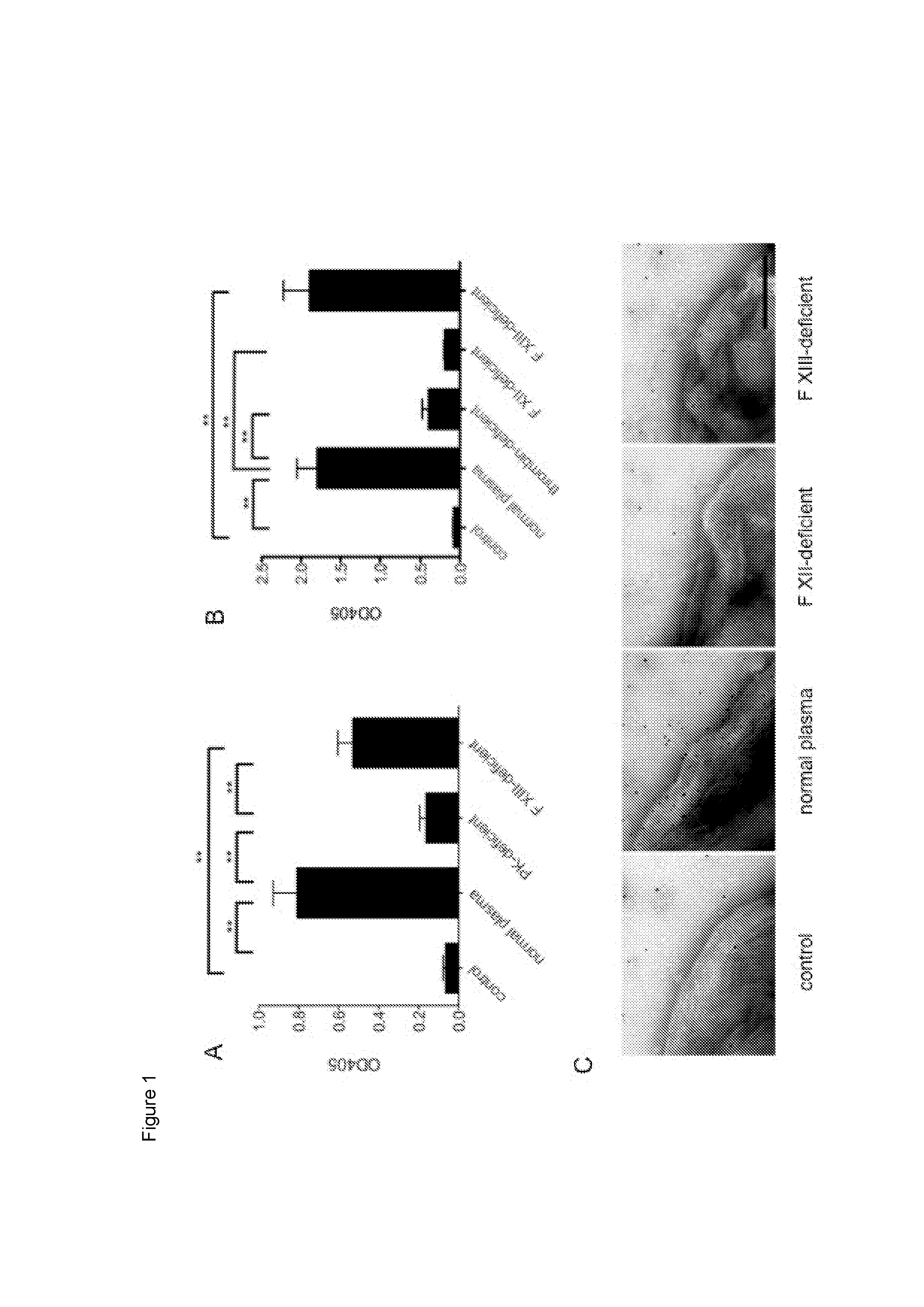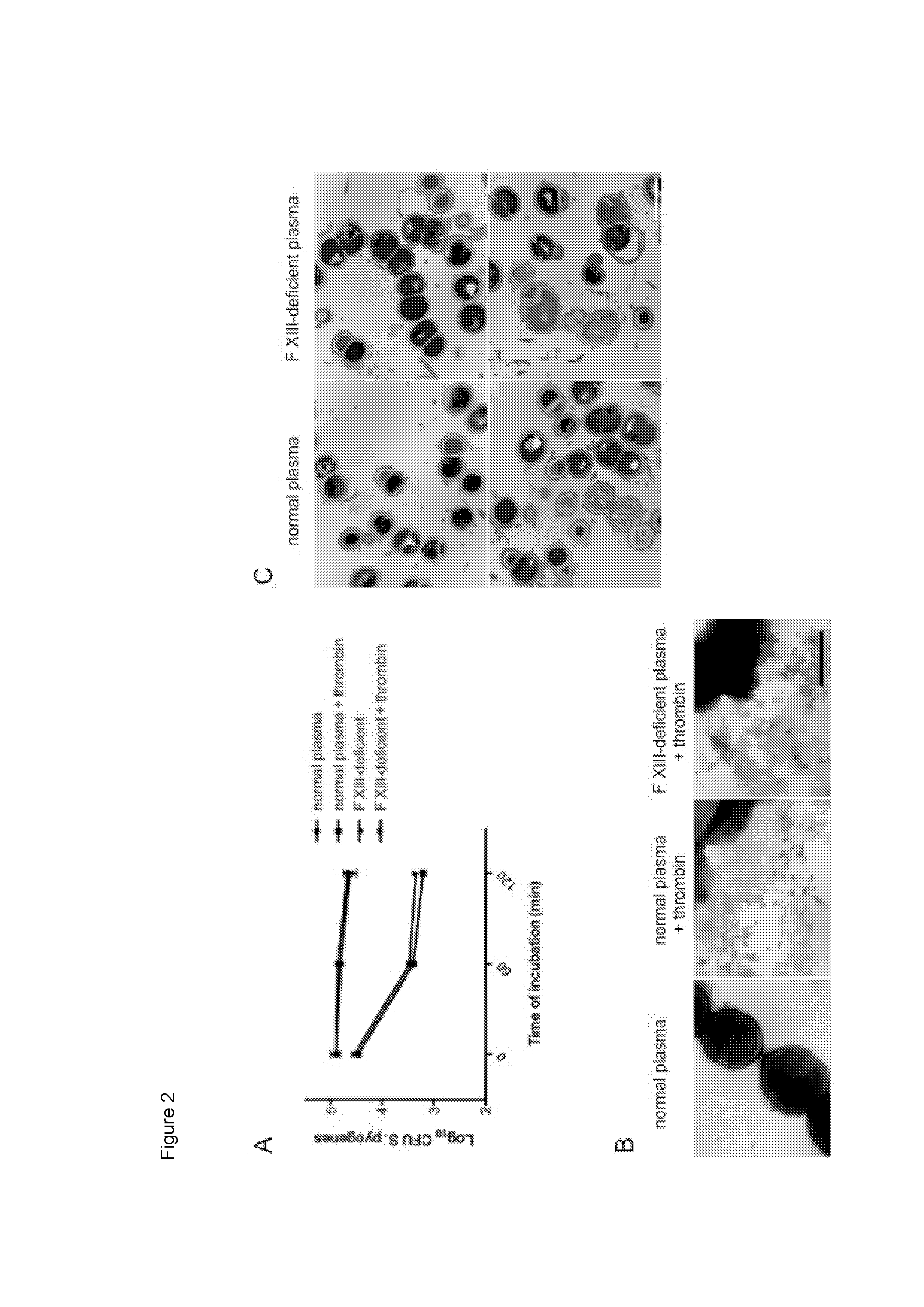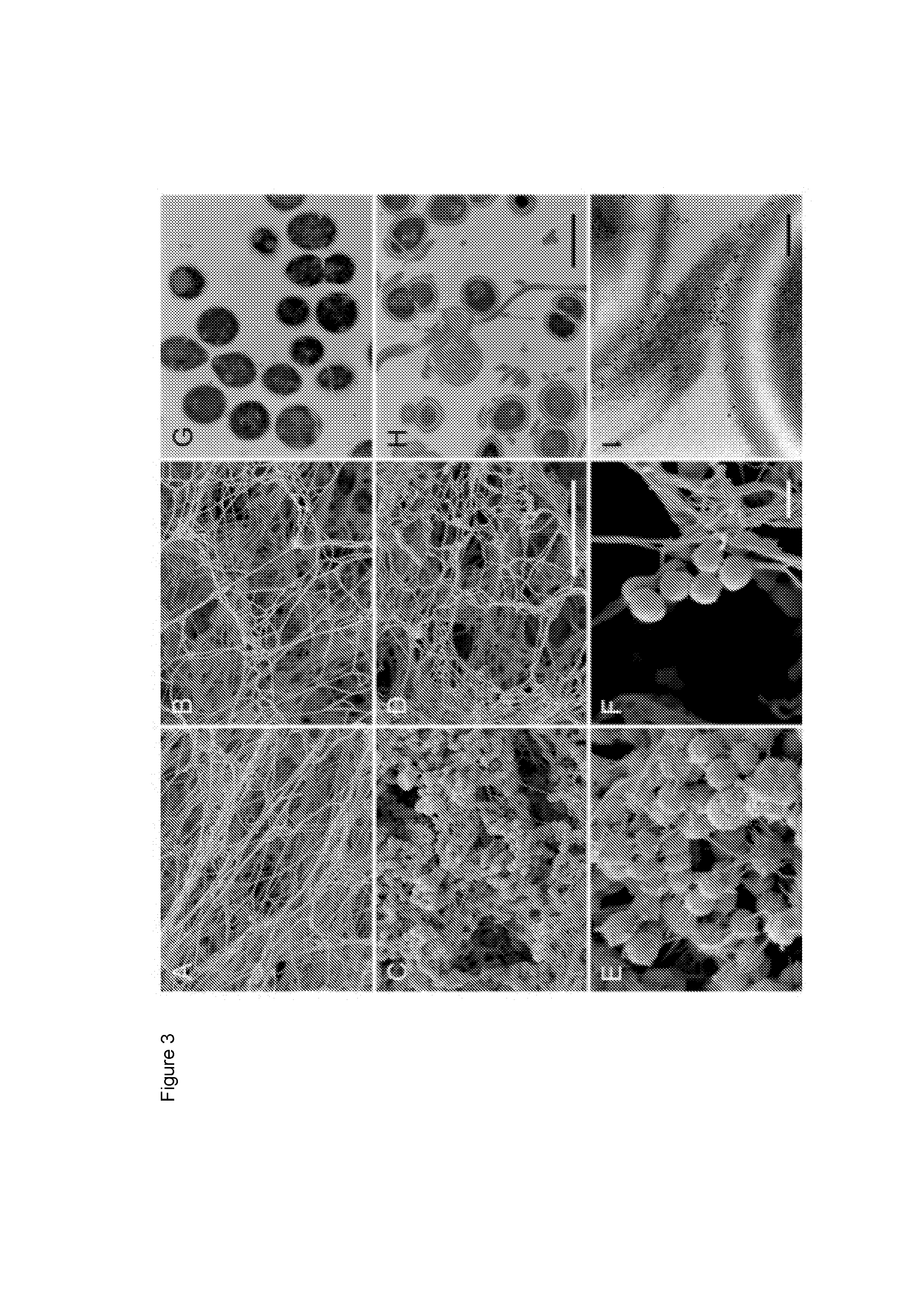Ancestral serine protease coagulation cascade exerts a novel function in early immune defense
a serine protease and coagulation cascade technology, applied in the field of blood coagulation factor xiii (fxiii), can solve the problems that this mode of action seemed rather impossible to achieve, and achieve the effect of reducing the inhibitory activity, facilitating bacterial infection, and certain levels of activity
- Summary
- Abstract
- Description
- Claims
- Application Information
AI Technical Summary
Benefits of technology
Problems solved by technology
Method used
Image
Examples
example 1
Contact Activation at the Surface of S. pyogenes Leads to an Induction of FXIII
[0088]Previous work has shown that the presence of S. pyogenes in plasma leads to an assembly and activation of the contact system at the bacterial surface (Herwald et al., 2003). These experiments were performed in the absence of calcium and phospholipids, which are important co-factors in hemostasis and required for an activation of coagulation factors up-stream of the contact system (for a review see (Hoffman and Monroe, 2001)). The inventors therefore wondered whether calcium and phospholipid reconstitution triggers an induction of the remaining clotting cascade at the bacterial surface. To confirm the previous findings the inventors first measured plasma kallikrein activity on AP1 bacteria upon incubation with normal zincified human plasma. Plasma kallikrein-deficient and FXIII-deficient plasma served as controls in these experiments. As depicted in FIG. 1A, substrate hydrolysis was monitored when ba...
example 2
Streptococci are Killed in Thrombin-Activated but not in Non-Activated Plasma
[0089]In the next series of experiments the inventors wished to study the fate of crosslinked bacteria in activated, but non-clotted, normal and FXIII-deficient plasma. FIG. 2A shows that bacterial growth is significantly impaired in thrombin-activated normal and FXIII-deficient plasma. This effect was time dependent and was not seen when plasma was left non-activated. To study whether the activation of plasma was combined with an induction of antimicrobial activity, plasma-treated bacteria were subjected to negative staining electron microscopy. FIG. 2B (left panel) depicts intact bacteria that were incubated with non-activated normal plasma and similar findings were observed when bacteria were incubated with non-activated FXIII-deficient plasma (data not shown). Once activated with thrombin, however, incubation with normal plasma (FIG. 2B, middle panel) and FXIII-deficient plasma (FIG. 2B, right panel) ca...
example 3
Bacterial Entrapment within a Plasma Clot is FXIII-Dependent
[0091]Human FXIII was recently shown in vitro to crosslink and immobilize bacteria of species Staphylococcus aureus and Escherichia coli inside a plasma clot (Wang et al., 2010). To test whether this also applies to S. pyogenes, AP1 bacteria were incubated with normal and FXIII-deficient plasma and thrombin-activated clots were analyzed by scanning electron microscopy. FIGS. 3A and 3B show clots formed from normal and FXIII-deficient plasma in the absence of bacteria. The micrographs reveal that both types of clots share a similar morphology, although clots generated from FXIII-deficient plasma appear to be less dense. However, dramatic changes were observed when clots were formed in the presence of AP1 bacteria. While massive loads of bacteria were entrapped in clots derived from normal plasma (FIG. 3C), only a few bacteria were found attached to clots when FXIII-deficient plasma was used (FIG. 3D). Also, fibrin network fo...
PUM
| Property | Measurement | Unit |
|---|---|---|
| Activated partial thromboplastin time | aaaaa | aaaaa |
| concentration | aaaaa | aaaaa |
| pH | aaaaa | aaaaa |
Abstract
Description
Claims
Application Information
 Login to View More
Login to View More - R&D
- Intellectual Property
- Life Sciences
- Materials
- Tech Scout
- Unparalleled Data Quality
- Higher Quality Content
- 60% Fewer Hallucinations
Browse by: Latest US Patents, China's latest patents, Technical Efficacy Thesaurus, Application Domain, Technology Topic, Popular Technical Reports.
© 2025 PatSnap. All rights reserved.Legal|Privacy policy|Modern Slavery Act Transparency Statement|Sitemap|About US| Contact US: help@patsnap.com



